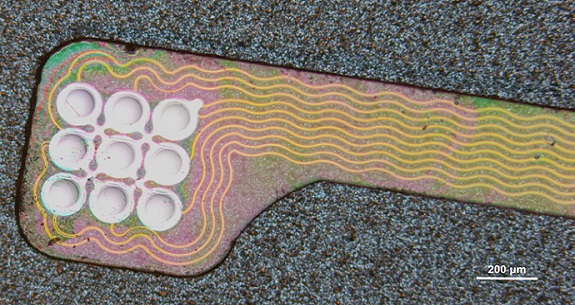Implantable Ultrasound Device Could Replace Electrodes for Deep Brain Stimulation
Posted on 06 Jun 2024
Deep brain stimulation with electrical impulses is an FDA-approved method for treating Parkinson’s disease symptoms. This technique involves using millimeter-thick electrodes to stimulate dopamine-producing cells in the substantia nigra region of the brain. However, these devices can corrode over time, and the buildup of scar tissue around the implant can disrupt the electrical signals. Researchers have now developed an alternative method that uses ultrasound instead of electricity for deep brain stimulation, delivered through a fiber about the thickness of a human hair. In a study conducted on mice, this method demonstrated that ultrasound stimulation can prompt neurons to release dopamine in a brain region commonly targeted in Parkinson’s patients.
Researchers at the Massachusetts Institute of Technology (MIT, Boston, MA, USA) who developed this technique had previously created wearable ultrasound devices for drug delivery through the skin and diagnostic imaging of various organs. However, existing methods for delivering ultrasound to the brain through the skull lack the precision to reach deep brain regions due to interference from the skull. To address this, the researchers designed a hair-thin fiber made from a flexible polymer. The fiber's tip contains a drum-like ultrasound transducer with a vibrating membrane. When this membrane, which houses a thin piezoelectric film, is driven by a small electrical voltage, it generates ultrasonic waves detectable by nearby cells. All device components are biocompatible, including the piezoelectric layer made of a novel ceramic called potassium sodium niobate (KNN). In tests on mice, the researchers showed that this ultrasound device, named ImPULS (Implantable Piezoelectric Ultrasound Stimulator), can activate neurons in the hippocampus. They then implanted the fibers into the dopamine-producing substantia nigra and demonstrated that they could stimulate neurons in the dorsal striatum to produce dopamine.

The current version of the implant is powered by an external power source, but future versions may be powered by a small implantable battery and electronics unit. The researchers have developed a microfabrication process that allows them to easily adjust the fiber's length and thickness and the frequency of the sound waves produced by the piezoelectric transducer. This customization could enable the devices to target different brain regions. The researchers now plan to explore how ultrasound stimulation affects various brain regions and whether the devices can remain functional for year-long periods. They are also considering adding a microfluidic channel to the device, which would allow it to deliver drugs along with ultrasound. In addition to its potential as a therapeutic tool for Parkinson’s or other diseases, this type of ultrasound device could be valuable for brain research, according to the researchers.
“By using ultrasonography, we can create a new way of stimulating neurons to fire in the deep brain,” says Canan Dagdeviren, an associate professor in the MIT Media Lab and the senior author of the new study published in Nature Communcations. “This device is thinner than a hair fiber, so there will be negligible tissue damage, and it is easy for us to navigate this device in the deep brain.”














